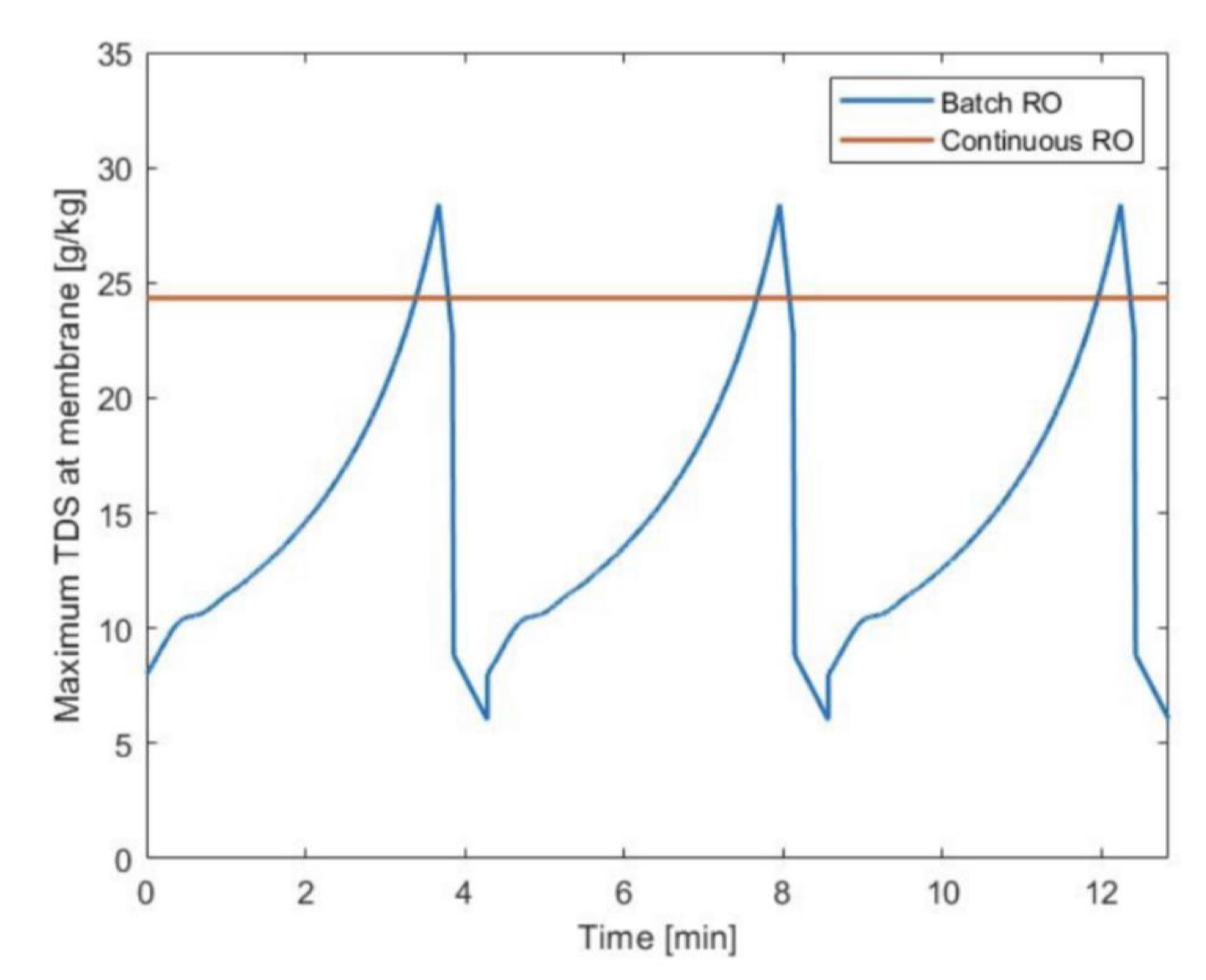Regular RO is a static, steady-state process. The membranes towards the back of the system are most susceptible to scaling because they are subject to the highest salt concentrations.
 Batch RO and other dynamic processes reset the nucleation induction clock to beat scaling.
Batch RO and other dynamic processes reset the nucleation induction clock to beat scaling.
Scaling is not an instantaneous process. It takes time for salt crystals to nucleate out of supersaturated solution, grow, and attach to the membrane surface. In a static process, there is plenty of time for scale formation to occur because membranes are constantly exposed to the same conditions. To keep the membranes clean, recovery must be scaled back or chemicals (antiscalants) can be dosed into the feed.

Dynamic, or time-variant, RO processes combat scaling by exploiting the kinetics of crystal nucleation and growth. Under a certain set of conditions (i.e. supersaturation level, flux, crossflow), it might take scale an hour to form. Dynamic RO processes can “reset the clock” by changing conditions before the scale is able to form.
In batch RO, the membranes are only briefly exposed to the maximum brine concentration at the end of the permeate cycle. They are immediately backwashed with permeate water during the flush phase.
In batch RO, the per-pass recover is substantially lower than the overall system recovery. This gives provides a higher crossflow velocity (shear force) at the back of the membrane train to prevent crystals from attaching to the membrane.
Despite its anti-scaling features, certain conditions might scale a batch RO system. We have developed a model to predict scaling likelihood in batch RO processes to identify safe operating conditions. This model will be supplemented with real-world data as we deploy batch systems in non-critical environments.